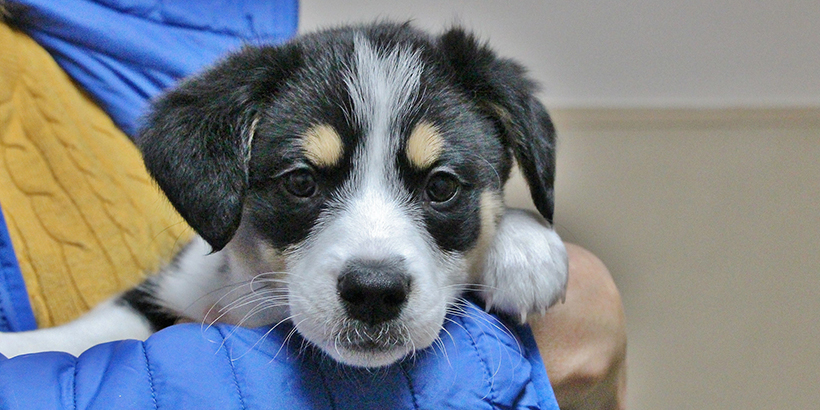
The decision to bring a dog into your home is an exciting one! But it’s also one that should not be made lightly. Before making a decision you should consider the financial, emotional and time commitments necessary, not just to obtain your new dog, but to care for them for years to come. Evaluate your daily routine, hobbies, activities and preferences, and choose a dog who will best suit your lifestyle. All members of the family should weigh in and be ready to welcome Fido with into their home and routine.
To prepare to add a dog to your family:
Gather supplies: Your new dog will need: a collar (with appropriate ID tags), leash, harness, food, treats, grooming supplies, food and water dishes, beds, pet stain remover and toys. Include toys that stimulate natural behaviors like seeking, running, scenting and more. You may also want a crate—look for an appropriately sized crate where it’s large enough for the dog to turn around and lay down in, but small enough where they won’t go potty in one corner and lay in another. Size-appropriate crates help encourage dogs to “hold it.” For puppies, consider a crate with an adjustable insert to accommodate their growth. Refer to the Housetraining Handout for more information. Additional items may include baby gate(s) and/or a play pen for blocking off areas.
Prepare your home: Set up supplies and begin doggie-proofing your house. Items to remove and/or make inaccessible should include insect or rodent traps, chemicals, electrical wires, shoes, laundry, garbage, trash cans, children’s toys, jewelry, electronics and small items that may be consumed or choked on. Just remember—if something is on the floor, your pup may see it as fair game.
Choose a veterinarian: Choosing a veterinarian to provide medical care for your dog is a personal choice and preference. Some people ask family and friends for recommendations, while others base the choice off of cost and location. Whichever practice you choose, be sure that they have licensed personnel, are experienced with treating dogs, have a clean, well-kept facility, and that you agree with their approach to medicine. Consider setting up a consultation appointment to see the practice and meet the veterinarians and technicians ahead of time.
Make a schedule: Consider your normal workday, and then create a schedule what times of the day your dog will eat, go potty, get exercise, and play. Training can be scheduled sessions or integrated into everyday activities, or both. Establishing a routine not only helps with potty training, but also with ensuring that they’re receiving ample mental and physical stimulation.
Learn how your new friend communicates: A wagging tail means a happy dog, right? Not always! Dogs communicate through various postures, facial expressions, and both verbal and non-verbal (body language) cues. Understanding what to look for will help you understand what your pup is telling you and promote a stronger bond. There are many good resources on body language. Visit this link for more information.
Create consistency: Dogs learn best through consistency and repetition. If there are multiple people in the home, have a discussion about what training methods will and will not be used. For this, it is best to consult with a professional trainer who is well-versed in positive reinforcement training and can teach you the most modern, effective methods. Stick to the schedule you created, and be sure that everyone knows and will follow any “household” rules to help your pup be successful.

